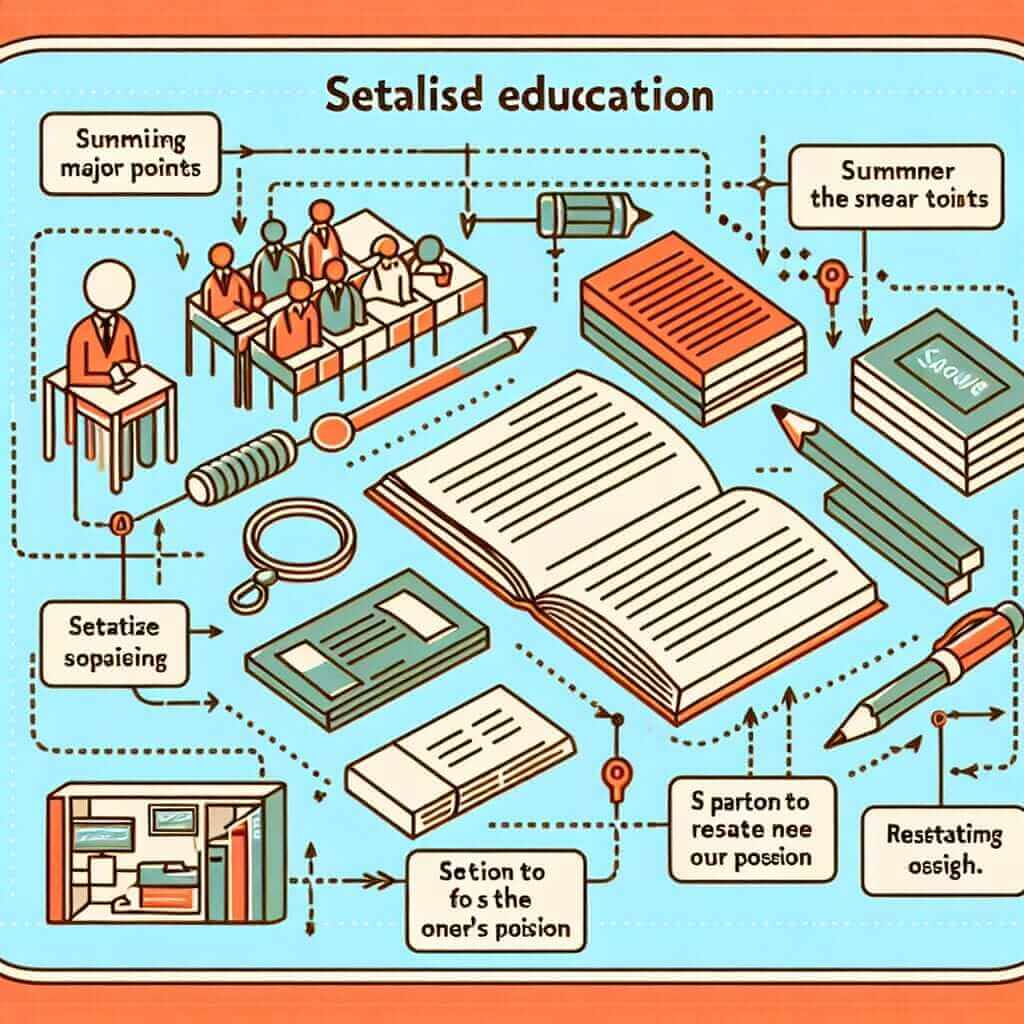The Importance of a Strong Conclusion in IELTS Writing Task 2
In the pressure cooker of the IELTS Writing exam, crafting a compelling conclusion might seem like an afterthought. However, underestimating its significance could cost you valuable marks. Your conclusion is the final impression you leave on the examiner, a chance to demonstrate your understanding of the task and your ability to present a well-structured argument.
A strong conclusion in IELTS Writing Task 2:
- Summarizes your main points: It reminds the examiner of the key arguments you’ve presented without merely repeating them verbatim.
- Restates your position: It reinforces your stance on the issue discussed in the essay.
- Provides a sense of closure: It leaves the reader with a feeling of completeness and satisfaction.
Mastering the Art of the IELTS Task 2 Conclusion
A well-crafted conclusion doesn’t require a magic wand, but it does demand adherence to some key principles. Here’s a breakdown to guide you:
1. Keep it Concise and on Point
Brevity is key. Aim for a conclusion that is no longer than 2-3 sentences. Avoid introducing new ideas or arguments that haven’t been discussed in the main body.
2. Summarize, Don’t Repeat
Your conclusion should provide a concise summary of your main points, but avoid simply paraphrasing your introduction or topic sentences. Synthesize the information to highlight the connections between your arguments and your overall position.
3. Restate Your Opinion
Reiterate your stance on the issue, but use different wording than in your introduction. This shows the examiner that you have a clear understanding of your own position.
4. End with a Final Thought
Consider concluding with a thought-provoking statement, a prediction about the future, or a call to action. This leaves a lasting impression on the reader.
Illustrative Examples from Real IELTS Essays
Let’s analyze some example conclusions based on a common IELTS topic:
Topic: Some people believe that technology has made our lives more stressful. To what extent do you agree or disagree?
Example Conclusion 1:
“In conclusion, while technology has undoubtedly brought about numerous advancements, its contribution to stress in modern life cannot be ignored. It is imperative that individuals find a balance between utilizing technology effectively and prioritizing their well-being.”
Example Conclusion 2:
“To sum up, although technology can be a source of stress, its benefits in areas like communication and information access are undeniable. By using technology mindfully and setting healthy boundaries, we can mitigate its potential downsides.”
Both examples effectively summarize the essay’s main arguments and restate the writer’s position. However, Example 2 goes a step further by offering a solution, leaving the reader with a sense of hope and possibility.

Tips for an Outstanding Conclusion
- Use Transition Words: Words like “In conclusion,” “To summarize,” “Finally,” and “Therefore” signal the beginning of your conclusion and help guide the reader.
- Avoid Clichés: Phrases like “In a nutshell” or “This essay has shown” are overused and detract from the sophistication of your writing.
- Proofread Carefully: Ensure that your conclusion is free of grammatical errors and typos. A polished final paragraph demonstrates strong language skills.
Final Thoughts
Mastering the art of writing an effective IELTS Task 2 conclusion requires practice and attention to detail. Remember, it’s your last chance to impress the examiner. By following the guidelines outlined above and learning from real examples, you can ensure that your conclusions are clear, concise, and impactful, ultimately contributing to a higher band score in your writing exam.